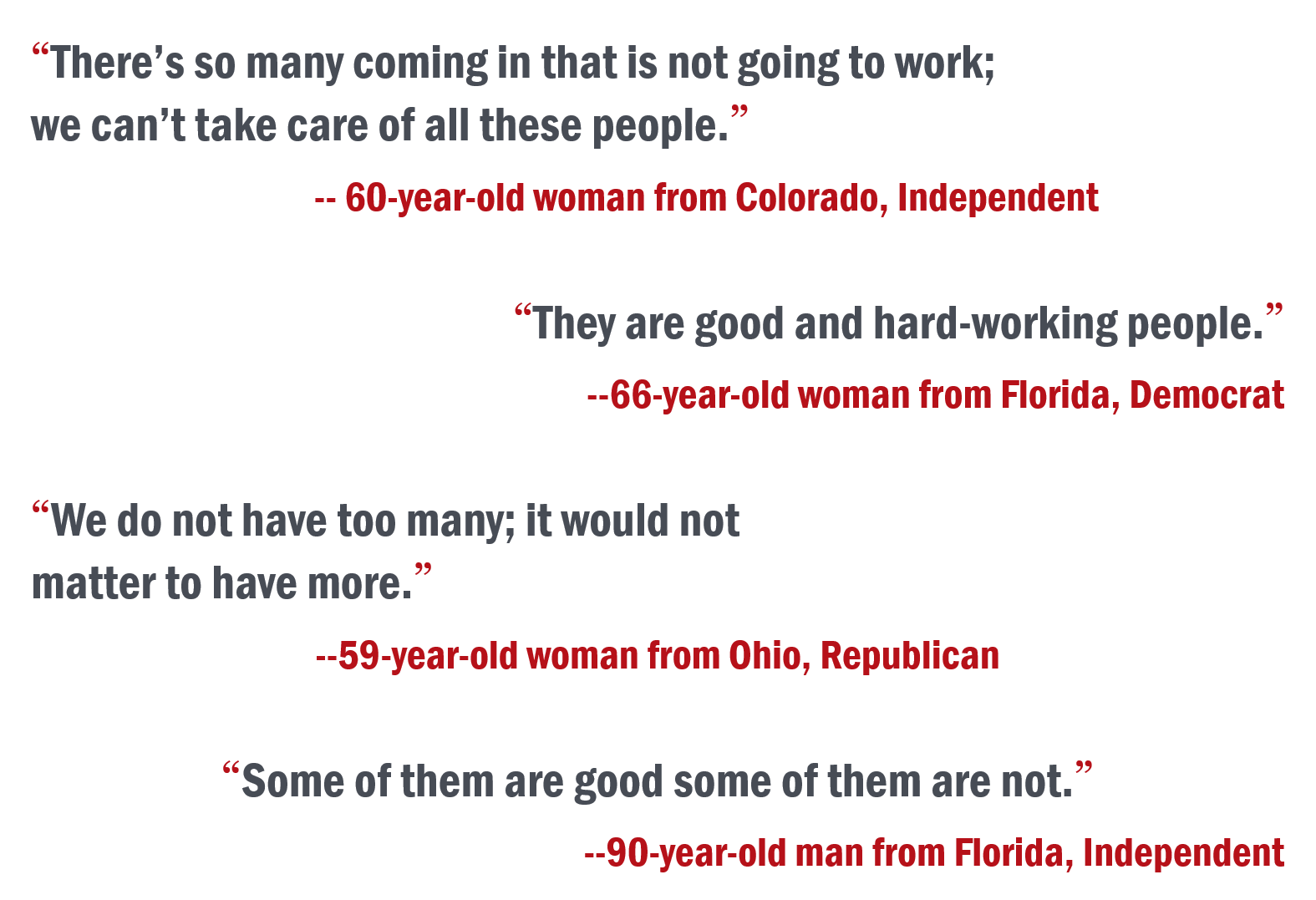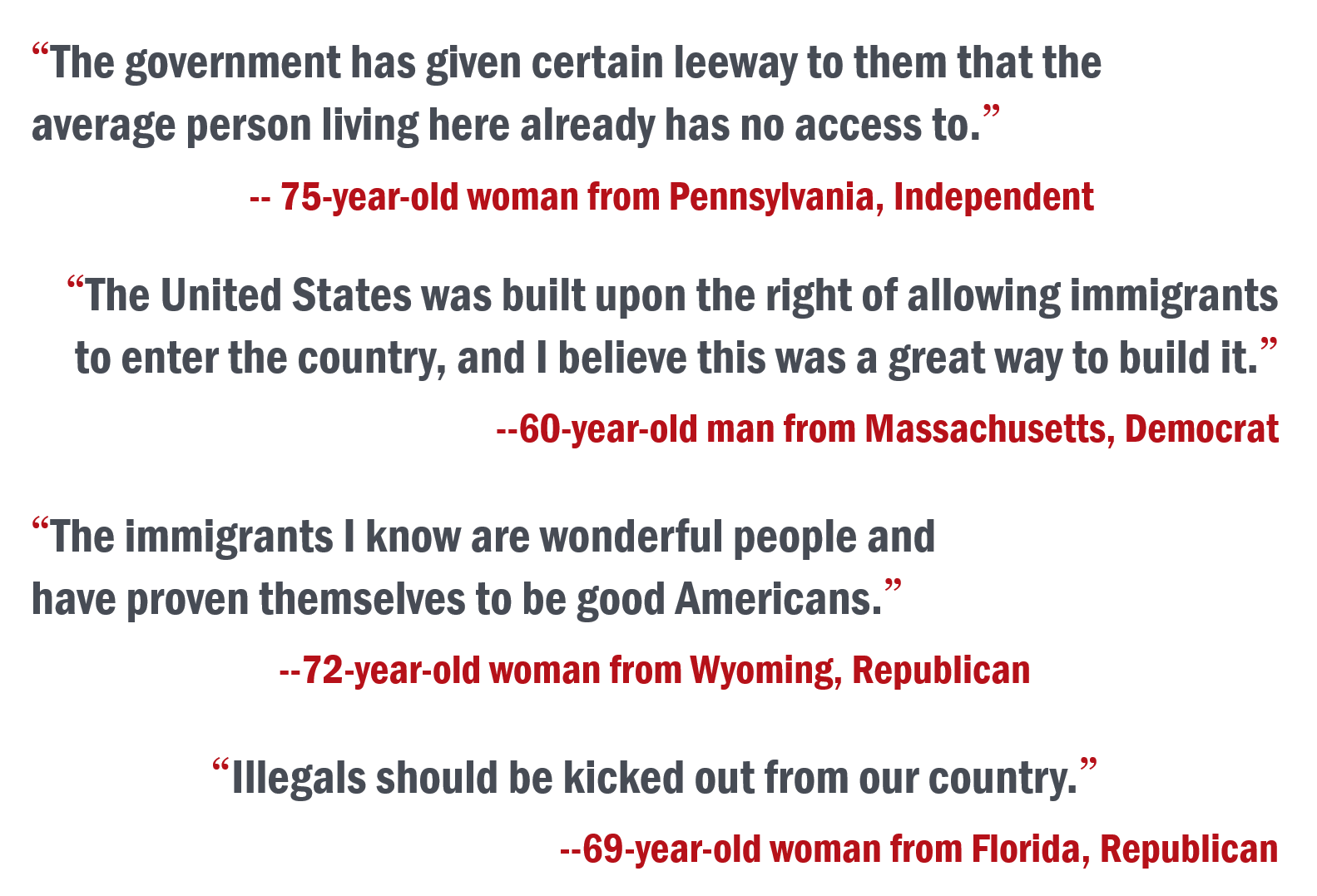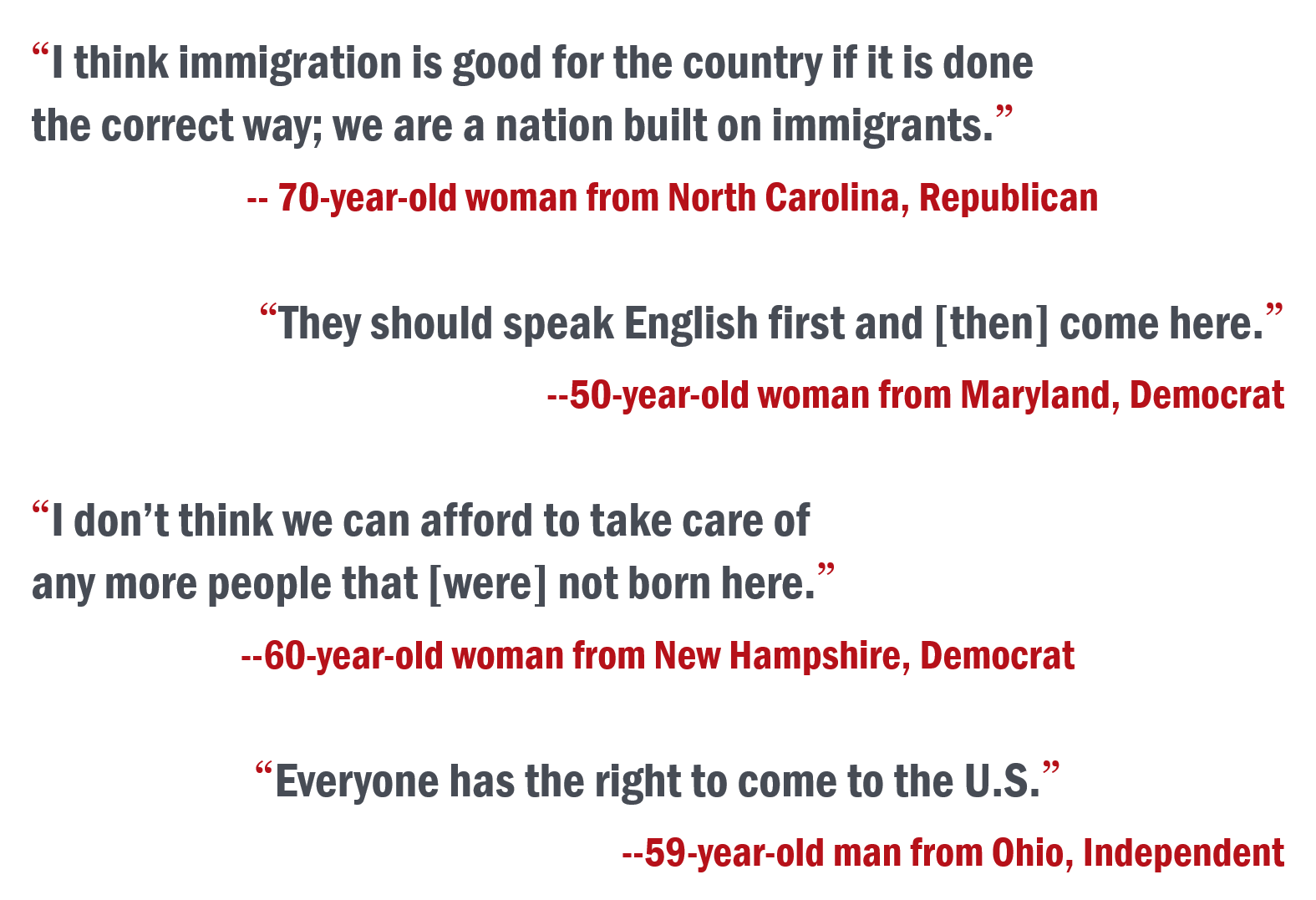APM Survey:
What do Americans think about immigration? And why?
DOCUMENTATION
SUMMARY REPORT
SURVEY TRANSPARENCY DISCLOSURE & METHODS
RELATED STORIES
APM SURVEY: WHO SHOULD DECIDE WHERE REFUGEES ARE RESETTLED?
AMERICA AMPLIFIED—ELECTION 2020: A NATIONAL SURVEY ON IMMIGRATION LED ME TO A RURAL IOWA TOWN CHANGED BY IMMIGRANTS
by APM RESEARCH LAB STAFF | Jan. 31, 2020
Our nonpartisan, nationally representative survey, conducted in collaboration with the new public media initiative America Amplified—Election 2020, provides new information about the American public’s opinions about U.S. immigration policy.
The survey was conducted Dec. 10 to 15, 2019, and it included two key questions: what Americans think about immigration to the United States on the whole, and what they think about immigration to their local communities.
Americans’ views on national immigration policy are related to their political affiliations and their proximity to immigrant communities
Question: “Do you think that the U.S. allows too many immigrants into the country, that the U.S. should allow more people to immigrate into the country, or that the country currently allows in the right number of immigrants.”
Source: APM Survey, December 10-15, 2019. N = 1,003 U.S. adults age 18 or older; overall margin of error is +/-3.5 percentage points.
A plurality—more than 40%—of Americans think the United States admits the correct number of immigrants into the country. However, between the remaining groups who either want to see more immigration or less immigration, people are evenly split: A quarter of Americans thinks the U.S. lets in too many immigrants, while another quarter thinks the country should allow more immigration.
DIFFERENCES BY POLITICAL AFFILIATION
The Research Lab’s analysis of these latter two groups shows that almost half of Republicans—46%—think immigration to the U.S. is too high; that’s triple of the number of Democrats with that opinion.
Indeed, a plurality of Democrats—42%—thinks the U.S. should allow more immigration. By contrast, less than 10% of Republicans have that view.
DIFFERENCES BY GEOGRAPHY
The other factor that appears to impact Americans’ opinions of national immigration policy is their own proximity to immigrant communities.
When the Research Lab analyzed the demographics of the counties where respondents live, it found that people living in places with fewer immigrants are more likely to think immigration levels in the U.S. are too high.
Three in 10 people living in counties where immigrants are less than 5% of the population said the U.S. lets too many immigrants into the country.
Question: “Do you think that the U.S. allows too many immigrants into the country, that the U.S. should allow more people to immigrate into the country, or that the country currently allows in the right number of immigrants.”
Source: APM Survey, December 10-15, 2019. N = 1,003 U.S. adults age 18 or older; overall margin of error is +/-3.5 percentage points.
That number shrinks significantly in places where immigrants account for 15% or more of the population. Less than 20% of people living in such areas said that the U.S. allows too much immigration.
The inverse was also true; in counties with higher concentrations of immigrants, people are one-and-a-half times more likely to say that the U.S. should increase immigration levels as those who live in low-immigrant areas.
Political affiliations also impact how Americans feel about immigrants in their local communities
When Americans were asked how they feel about immigrants in their local communities, their responses followed similar patterns to the question about national policy.
In this case, a slim majority—52%—said the right number of immigrants live in their local communities. But between the two camps who disagree (those who want more immigration and those who want less), Americans slightly favor seeing more immigrants in their local communities.
One-in-five Americans would like to see more immigrants in their local communities, while slightly less—17%—want to see fewer immigrants in their neighborhoods.
Question: “Which comes closest to your views about recent immigrants who have come to the U.S. in the past 10 years or so: There are too many immigrants living in your local community, You would like to see more immigrants living in your local community, or Your local community has the right amount of immigrants?”
Source: APM Survey, December 10-15, 2019. N = 1,003 U.S. adults age 18 or older; overall margin of error is +/-3.5 percentage points.
As with the national question, answers to the local question broke along political lines. More than 30% of Republicans said there were too many immigrants living in their communities, while only 10% of Democrats shared that view.
Source: APM Survey, December 10-15, 2019. N = 1,003 U.S. adults age 18 or older; overall margin of error is +/-3.5 percentage points.
Conversely, nearly two in five Democrats said they wanted to see more immigrants as their neighbors, while less than 10% of Republicans gave that same answer.
Surprisingly, proximity to immigrant communities did not correlate with Americans’ desire to see more or fewer immigrants as their neighbors
Unlike the national question, Americans opinions about immigration at the local level do not correlate to the size of the immigrant populations in respondents’ home counties. Statistically similar proportions of the those from counties with small, medium, and large immigrant populations say there are too many immigrants nearby, just as statistically similar proportions say they would like more immigrants in their area.
Question: “Which comes closest to your views about recent immigrants who have come to the U.S. in the past 10 years or so: There are too many immigrants living in your local community, You would like to see more immigrants living in your local community, or Your local community has the right amount of immigrants?”
Source: APM Survey, December 10-15, 2019. N = 1,003 U.S. adults age 18 or older; overall margin of error is +/-3.5 percentage points.
In their own words:
Americans tell us the reasoning behind their feelings about immigration
At the end of our survey, we asked open-ended questions to better understand why Americans feel the way they do about immigrants in their local communities, some of which are highlighted below. Read a sample of those responses at the end of the full report, and listen to the radio story by America Amplified’s Andrea Tudhope.
Other key findings about Americans who want less immigration to the United States and those who wants more
When asked about immigration to the U.S. as a whole:
A higher proportion of younger adults favor admitting more immigrants than is the case among older adults, including 2 in 5 of those under 35, compared to 1 in 5 of those over 45.
The age group 55 to 64 is one of the few groups identified in this survey where the proportion of respondents who indicate that the U.S. admits too many immigrants exceeds the proportion of those who think the U.S. allows in the correct number (38% and 35%, respectively).
A much higher proportion of non-Hispanic Whites—31%—think the U.S. admits too many immigrants. Far fewer non-Hispanic Blacks and Hispanics share that opinion (12% and 10%, respectively).
Additionally, the answers from respondents living in likely battleground states for the upcoming presidential election followed the answer patterns of those living in Republican-leaning states.
The Research Lab also asked open-ended questions to better understand why people feel the way they do about immigrants in their local communities. For those responses and more detailed analyses, read the full report here.
PARTNERS FOR THIS SURVEY
The APM Research Lab conducted this survey jointly with America Amplified—Election 2020, public media initiative funded, in part, by the Corporation for Public Broadcasting. Responses were collected by SSRS of Glen Mills, Pennsylvania.









